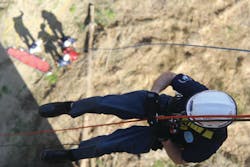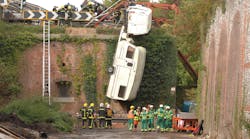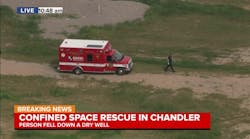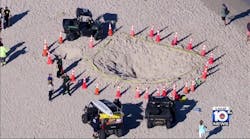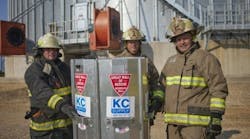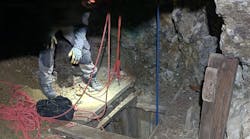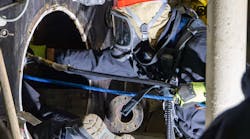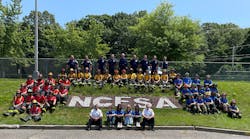In Part 1 and Part 2 of this series, we focused on considerations for developing a team and the first two phases of development. In this article, we will continue our review of the third phase of a team’s development. Remembering that much of the content you utilize in these phases will have originated from the questions you asked of yourself in Part 1 of the series.
Phase 3 – Development of Team
Team member selection – Assemble a committee to oversee the selection process. This group can be a permanent group that attends to the selection process long term or this can be an ad-hoc committee assembled for this one task then disbanded after the completion of the task.
Develop a standardized application and questionnaire for applicants to submit as the first step in the selection process. This format allows for easier data collection by the committee, while the questionnaire is a valuable tool in identifying unknown talent with in your candidate pool.
It is very important that the expectations of the team be defined and presented during this phase. You will most likely suffer a loss of many applicants if you do not provide this information in advance.
An example of a few of the elements the expectation list may include:
- Make sure the candidates are aware their participation with the team/unit is an additional commitment beyond their current obligation to their home agencies. Establish a standard where they must meet their host agencies hours, monthly points or whatever standards that exist within that agency to maintain their eligibility to participate in this secondary activity.
- As you develop a team, training will be a major part of your initial activities. Most organizations do not have the luxury of starting up with a fully trained staff of responders. Make sure applicants are aware that some of the courses required will be obtained over time through team training activities. I have seen a few lost opportunities to have a very talented member of the community on a team because they assumed their lack of technician level certifications would not allow them to apply.
- Have minimum standards as a part of the process. Awareness level courses are often utilized as a part of a team’s minimums for applications. These courses provide two things to the applicant: an overview of the types of activities they will be engaging in; and the applicant will be showing their individual willingness to commit to an activity.
- A new team member’s assigned position(s) will be specific to operational needs of the team and not always parallel to their positions in their host agency. Just because the candidate is a chief or holds another rank in their host agency does not guarantee they will be a team leader, squad leader, etc. on a technical rescue team. (I have heard individuals state that they are “better at giving orders than taking them” – this is a major red flag and is one of the many good reasons for having an interview process as a part of your team’s development plan.)
As you fill your initial team roster, keep in mind that it should be a top-down process. This reflects on the importance of filling the support positions of your team during the initial wave of development. Without people in place to accomplish the position specific tasks you will end up with gaps in your capabilities. Many of the applicants will be aspiring to hold rescue specialist positions as that is the place where they can get into the mix and “break some rocks.” Those specialist positions are important, however, without the leadership to bring that process together you will never get your team off the ground. Additionally, if the command and general staff slots are not filled; you will inevitably burn out those who do fill the positions around the vacancies due to the overload of work they will encounter.
Training the team – Prior to initiating your training program you should establish a priority list of the programs you will provide and in what order they will be offered. Determining the level of operational capability you plan on aspiring to will help in this process.
Training is a perpetual process. Think long range in your planning process.
Equipment availability will play a major role in your initial training plan. If you plan on accomplishing your training locally, you must assure that you have sufficient resources available to accomplish the task. If you do not have a sufficient cache of equipment on hand to meet your needs you may have to evaluate your proposed schedule and possibly look to alternate methods of obtaining training.
Many states have very well developed technical rescue training programs. Contact your state agency to obtain more information related to these programs. If you do not have this type of training available, you may have to seek out third-party training companies, which exist throughout the country.
Keeping open communication with your state or governing agency during your training is important; you will want to confirm that your program is meeting the accepted standards for your area.
Provide a mix of hands-on and classroom training topics. Both components are needed to develop a balanced program. Technical rescue programs are traditionally highly sought after due to the extensive hands-on opportunities they provide the students.
Remember to set a pace that is both obtainable and that does not overload your students or your team’s ability to meet the training demands. In the beginning, it is common to overflow the schedule with training courses due to the excitement that comes with a newly formed team. You must remember that this is an additional undertaking on your member’s part and that they still must maintain their commitments to their host agencies and to the families at home.
Obtaining equipment, uniforms and vehicles – This can be a very expensive part of your team’s development. Self discipline will be one of your greatest assets during this phase. From the very start of the process set standards for growth and stick to them. View each item you desire with a “need versus want” perspective.
The resource typing lists (which will be covered in an upcoming segment of this series) are a great tool during the equipment acquisition process. These lists are very comprehensive and provide a detailed overview of the various tools needed to accomplish the tasks you are undertaking. These lists, however, are not shopping lists. Because an item is on the resource typing list it does not mean you must have every item to accomplish your mission. I have witnessed agencies attempting to make the resource list their personal shopping guide. The drawback to this is that the list is not updated on a regular basis and items are sometimes no longer a functional part of a particular specialties equipment cache. Self evaluation is the best tool to assure that your funding dollars are being spent in the best manner possible.
Funding will be a big part of your process. Always work within the fiscal means of your team. Long-term sustainability requires a well-developed financial plan. Do not become dependent on grant funds only. As we have already seen around the country, grants can disappear as quickly as they arrive. If you question that thought, ask anyone from a community who previously received Urban Area Security Initiative (UASI) funds.
Uniforms are another costly investment. This is due to the price of the individual items and the number of members you need to outfit. To protect your team’s investment, you may wish to issue high-cost items such as turnout gear, coveralls, helmets and harnesses rather than giving them to the individuals. This method allows you to recover these items if an individual leaves your team. Some uniform items are more personal (such as t-shirts and hats) and you can consider these items gone forever once issued.
You must have a uniform policy in place to govern use of team-issued equipment to keep these items from ending up in a local bar representing your team or agency (there will be more on uniform policies in December).
Vehicles are by far the top ticket item in all of your initial and future activities. During your initial question-and-answer process you should have addressed how you plan to transport your cache of equipment.
Unless you have a lucrative start-up budget, you will most likely be looking at obtaining existing assets to meet your start-up needs. An example of how we worked around this issue when our team started up was using an existing box-trailer as a short-term solution to making our equipment cache mobile. As we evolved and were able to obtain funding for vehicles, we slowly transitioned our cache from the trailer to our new apparatus.
Trailers are very versatile, however, you must have access to vehicles to tow them. Self-contained vehicles are easier to get moving in a hurry, but with this mode of transport you have a much higher cost in obtaining them and the ongoing maintenance of the vehicles.
When you are doing your research on the best option for your agency, do not hesitate to visit other teams and department. Everyone is willing to show off their fleet and equipment to others. This will also provide you with an opportunity to learn from other’s successes and failures during their team’s development phase.
Administrative support – This is a critical element in any team’s long-term success. As your operation expands, additional members should be involved with the team’s administrative process.
Unfortunately you will have to develop most if not all of the administrative records for your team. These tasks are not overly complicated as you look at them item by item, however, the volume of data that has to be collected and filed can overwhelm a single individual.
These are some of the items you will need to develop for your team:
- Team rosters
- Health records
- Training records
- Deployment and/or callback lists
- Equipment inventories
- Budgets
This list is a portion of the overall administrative responsibilities a team is responsible for. Utilizing ad-hoc committees is a good tool in meeting the demands of a team’s initial start up.
Managing initial membership applications is a good example of a large workload during your start-up phase, which will taper off quickly once you are up and running. By putting a small committee in place to handle the initial workload, you will be able to keep the process moving forward. After the first few months, you can decrease the numbers on the committee to match the volume of incoming applications.
Having a well-staffed logistics section makes inventory, equipment tracking and maintenance much easier. These individuals will be well versed on the specifics of the team’s equipment cache and should have a major role in the creation of your equipment tracking system.
You most likely will have multiple funding lines within your team. These may be from various grants, local budget line items within your respective system and many other funding sources. By having a few people overseeing your financial system it adds both a checks and balances aspect to your operation and also helps to divide the workload once again.
This segment on administrative support only touches the very tip of what you will need to keep your operation afloat. Never hesitate to reach out to other teams in your region or beyond as they all were new teams at one time in the past and have most likely faced the same growing pains you will face as a new unit.
Conclusion
We covered a multitude of activities that a team must address in the initial phase of their existence. Remember to share the workload within your team, as this will definitely provide a greater level of overall success. The more the team members work together at this stage of the team’s existence, the stronger they will be when you are called upon to assist others in their time of need.
Next month we will focus on the development of a team’s standard operation procedures.
BOB DUEMMEL is the technical rescue editor for Firehouse Magazine and Firehouse.com. He is also the deputy coordinator for Special Operations in Monroe County, N.Y. and a captain with the City of Rochester Fire Department. He is the Plans Manager for New York Task Force-2 USAR Team, a member of the Western New York Incident Management Team and a member of the New York State Technical Rescue curriculum development team. He is a nationally certified instructor with a focus on technical rescue programs. He has delivered training to fire service, industrial, military and international rescue teams and has assisted with exercise evaluation for the United Kingdom and the European Union's USAR program. Bob has also participated in numerous USAR exercised as both a participant and evaluator. He is host of “The Buzz on Technical Rescue” podcast. Bob can be reached at [email protected].
